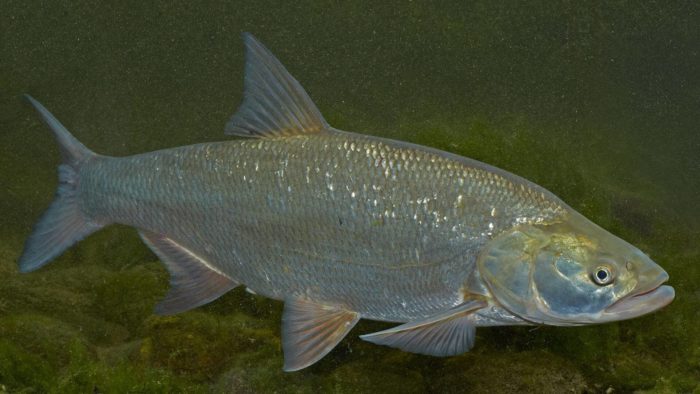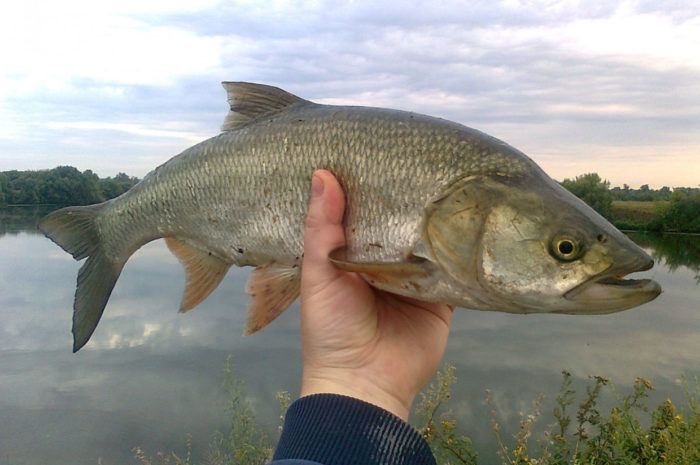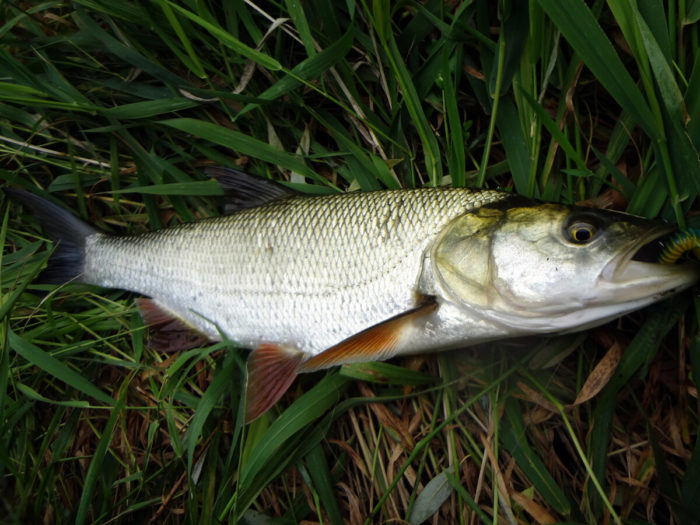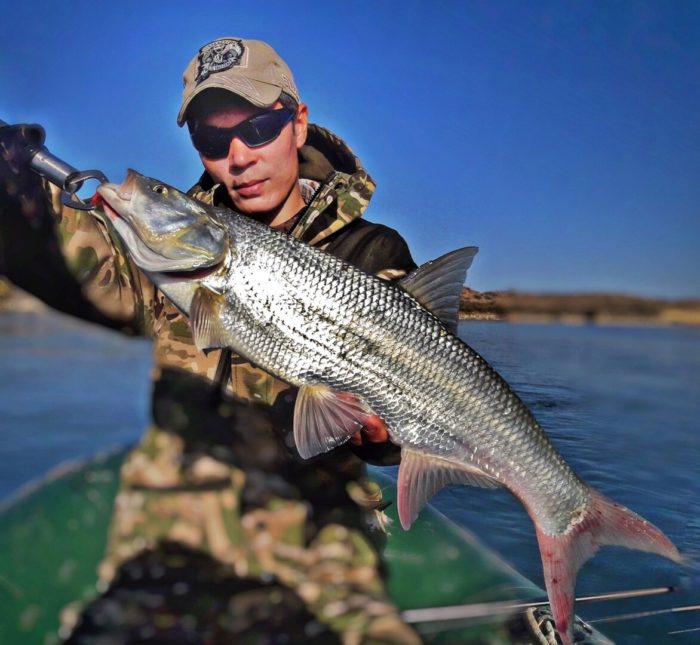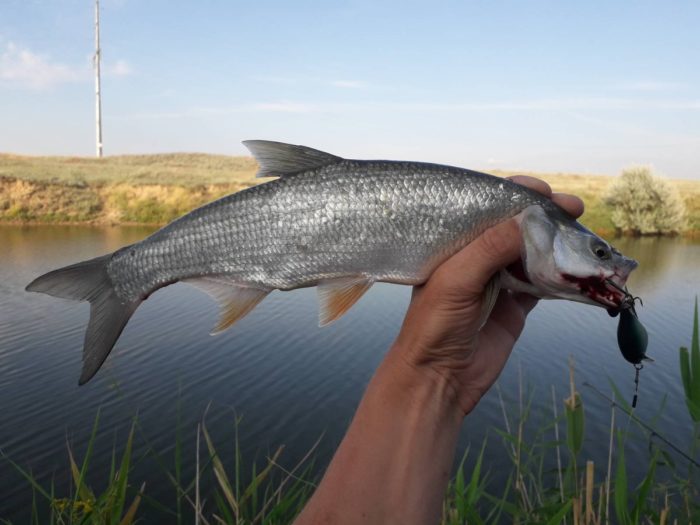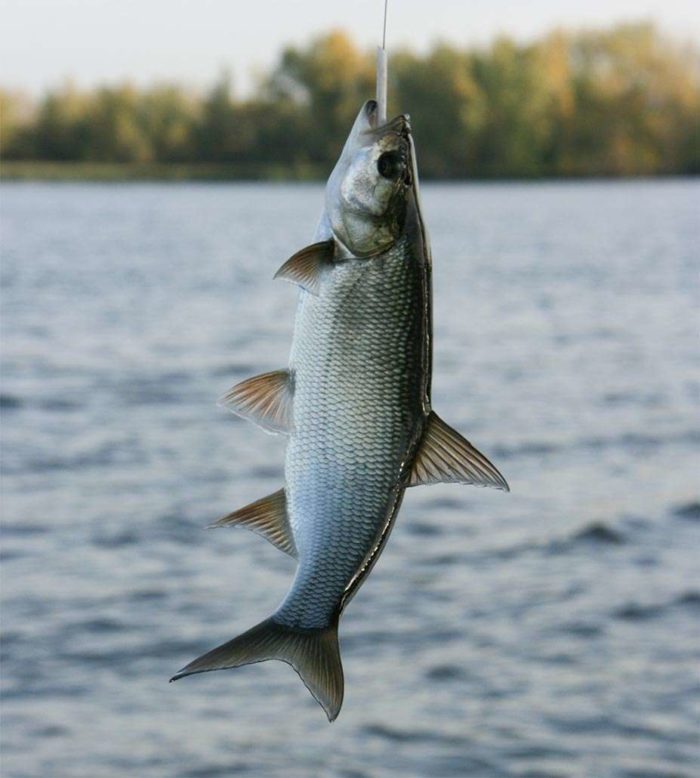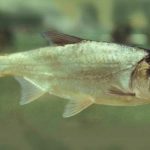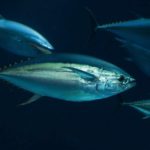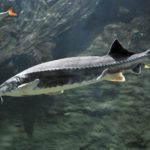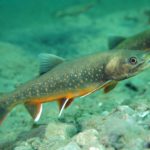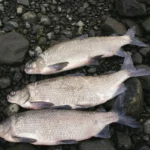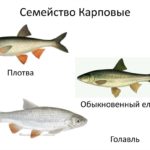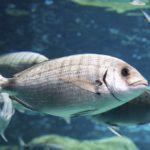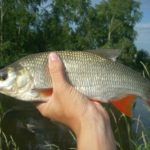Asp is a unique representative of the Karpovidae, the only predatory fish of this family. The species has many popular names: sheresper, horse, grip, belest. Catching asp is not easy, despite the tendency to flock together in large schools in the summer, since the fish is extremely cautious. But this is precisely why catching a river predator is a particular pleasure. For anglers, we tell you in detail about the asp fish: what kind of fish it is, how to catch it, how tasty and nutritious it is.
Description of the fish
This fish is large, massive, with an elongated and strong body.The scales are bright silver, small, non-rigid. The dorsal part of the scales is darker and has a bluish tint. And the belly is light silver. Sheresper grows on average up to 50 cm, but some individuals can grow up to a meter. The average weight of an adult fish is 2-4 kg, but some individuals can eat more than 10 kg.
The head has an interesting shape: it is elongated, with a sharp snout and a large mouth, and the lower jaw is curved upward, like a bulldog. The eyes are small, greenish-yellow. The caudal, dorsal and pelvic fins are gray with a dark gray border, and the pectoral fins located on the sides are reddish. The dorsal fin of the asp is similar to that of a shark. That is, when the fish rises to the surface of the reservoir, the fin is visible above the water.
The old name of the fish - sheresper - was given to it for its ability to spread its fins widely. This is how the asp helps itself to jump out of the water in pursuit of prey.
Lifespan is determined by living conditions. On average, an asp lives up to 10 years. However, in modern conditions, representatives of the species rarely live to this age, since, firstly, they are a commercial fish desired by many fishermen, and secondly, the environmental situation in their habitats is deteriorating every year.
Habitat
The species is considered European, although in reality its range is wider. Asp is found in the rivers of the Black Sea, Baltic, Azov, and Caspian basins. Particularly large populations are observed in the Black Sea basins: in the Don, Dnieper, Danube, Dniester and their tributaries. In the northern regions of Russia, the asp lives in the Pskov, Ladoga and Onega lakes, the Northern Dvina, the Neva and its tributaries, and Lake Ilmen.
Scandinavians also catch asp in their lakes and rivers. Significant populations of predatory fish are observed in German, Austrian, and Balkan reservoirs.In the Central Asian region, sheresper is also common; it is caught in Lake Balkhash, in the Caspian rivers Syr Darya and Amu Darya, in numerous Kazakh and Uzbek reservoirs.
The asp prefers to swim near the surface and in the middle layers of water. The tendency to rise to the water surface is especially often observed in fish on clear and warm days, since representatives of the species like warmth. And on bad days, the asp tries to stay in the depths of the reservoir. The sheresper hibernates in the depressions of the bottom, spends the night hours there, and during daylight hours tends to shallow water.
River channels of medium depth, lakes and reservoirs near dams are the main habitats of the asp. This fish cannot exist in a reservoir with stagnant, muddy water overgrown with mud and aquatic vegetation. Large fish will not be able to live in small rivers and streams. Being a freshwater species, the asp does not live in the seas. For a comfortable habitat for predatory fish, the reservoir must be spacious, clean, with good and stable water circulation and a sufficient amount of small animals that will become food.
Diet
Asp is a predator-fighter. He does not ambush his victims, but quickly and furiously attacks them. Having discovered a school of small fish, the predator quickly heads in that direction, jumps out of the reservoir and, before the victims come to their senses, hits the water with its strong tail. The blow stuns the fish, and they remain in a daze for several seconds. This time is enough for the asp to swallow the victim.
Despite its predatory lifestyle, the asp does not have teeth in its jaw. This predator is focused on small prey that can be swallowed whole, to catch which it uses the specific hunting method described above.It is for its noisy hunting habits, for pouncing on prey from above during a jump, that the asp, also known as cherry or tereh in some regions, received its popular names “horse” and “grab”.
In addition to small fish, mainly gudgeon, bleak and sprat, sheresper hunts:
- fry;
- bottom worms;
- small amphibians;
- small crustaceans;
- dragonflies, moths, beetles;
- insect larvae developing in water.
In the summer, when reservoirs are filled with young fish, asps unite in schools, all hiding together at the bends of river channels for the convenience of attacking victims. Although at other times of the year these predatory fish prefer a solitary lifestyle. Having eaten, the predators rest at depth and digest the food. The asp feeds only during the day, so it should be caught during daylight hours.
In the last days of October, the fish go to the bottom depressions for the winter, where until the arrival of spring they hardly feed, show minimal physical activity, and are in a lethargic state. Therefore, it is useless to catch a wintering sheresper; you should go fishing for this predator in the summer.
Natural enemies
An adult asp is a large and cautious fish, so it rarely becomes a victim of other predators. The only things that are scary for her are large birds of prey that can snatch fish from the water with their claws, for example, ospreys and eagles. But young asp are practically defenseless against other large predatory fish. Seagulls and other lake and river birds also grab young fish.
But, of course, humans can be considered the asp’s most serious enemy. Catching a sheresper is the cherished dream of many fishermen who go fishing from May to October. They catch predatory fish with a fishing rod with a float or a spinning rod. As bait, they use various living creatures that the asp feeds on: beetles, worms, larvae.For fly fishing, artificial baits in the form of insects and small fish are used. In the summer, during the period of greatest activity of fish, they catch it with a spinning rod using live bait using a spinner or wobbler.
Asp spinning competitions are popular in the West. They are usually arranged early in the morning, when a hungry predator grabs any bait.
It is not difficult to determine how a predatory fish moves along a river. To do this, you need to watch for splashes from tail strikes on the surface of the water. It is recommended to cast the bait exactly to the place where the fish just hit the water. After the strike, the asp swallows the disoriented victim, and there is a chance that he will also grab the bait. The sheresper is strong; after being hooked, it actively breaks out. Therefore, to catch this fish you need to use strong and reliable gear.
The asp has excellent eyesight; he is able to distinguish a live fish from bait. Therefore, you should buy bait that is as realistic as possible, practically no different from a real fish. You also need to take into account that an asp, swimming at the surface of the water, is able to distinguish a fisherman sitting on the shore. Having realized that danger threatens, the fish will never grab the bait, even the most realistic one. Therefore, the angler should wear a camouflage suit that allows him to blend in with the surrounding nature. And while fishing, you should not make noise on the shore or move actively.
Reproduction and spawning
The fish becomes sexually mature at the age of 4 years. At this age, the asp already weighs 500 g. Males and females do not differ in body size. This carp species spawns in schools. After a hungry winter, the asp is weak and exhausted, so during spawning he does not hunt: there is simply no physical capacity for this.Spawning fish feed only on inactive prey: larvae, crustaceans, and worms. But after spawning they begin to eat off.
A pair of fish in the process of mating swims in the bottom area of a reservoir. In one section of the river you can see a dozen pairs of fish at the same time. Belonging to the Karpov family, asps exhibit a complex character during the spawning period: males are aggressive towards each other; in the struggle for attention, females often start fights, causing more or less severe injuries to their opponents.
The spawning begins in late April and takes several more days in May. Comfortable water temperature during spawning is +8-15°C. It doesn't matter how strong the current is. The fish is strong enough to swim against the current. Females, having chosen an area with a rocky, sandy or muddy bottom, place 100-300 fairly large eggs, reaching a diameter of 2 mm, on the stems of underwater plants. The male then fertilizes them. Asp eggs are sticky, so they are firmly attached to plants.
The duration of incubation is determined by the water temperature. If the temperature exceeds +15°C, then offspring can be expected within 5 days. If the water temperature is lower, the fry will hatch in 8 days. And if the temperature is below +12°C, then the offspring will appear in 12-15 days.
Newly hatched fry are small, not exceeding 7 mm in length. They first feed on the contents of the yolk sac on their abdomen. Then they find a section of a reservoir with a quiet current or a shallow area and begin to look for food there. The fry feed on animal plankton. The young fish grow quickly, and over the summer they grow so much that in the fall there are enough small fish.
Number and population
The population of this commercial fish is small due to significant mortality of young animals. Juvenile asp are often caught in fishing nets, but they are discarded like other “trash” fish. The second factor in population decline is water pollution. The decline in the population has led to the fact that the asp is now a rare species and is listed in the International Red Book. Russia is also concerned about the reduction in the number of commercial species. In some Russian regions, asp has become so rare that it was included in the regional Red Data Books, for example, in Karelia.
Due to the reduction in the natural population, the question arose about breeding sheresper for commercial purposes in artificial reservoirs. The only difficulty is that the asp does not like living in stagnant bodies of water. That is, artificial ponds must be made so that they are comfortable for fish. There are already entrepreneurs involved in asp breeding in ponds. And the experience gained proves that when comfortable conditions are created, the fish gain weight well and actively produce offspring.
Varieties
There are 3 subspecies of predatory carp fish:
- common asp, also known as European asp, found throughout Europe;
- red-lipped - found in rivers belonging to the southern and middle basins of the Caspian Sea;
- Aral - found exclusively in the Syr Darya and Amu Darya.
Commercial value
Asp is considered a valuable commercial fish, as its meat has high taste. However, due to the decline in the population of the species, its commercial catch has become secondary. In former times in Russia, sherespers were actively caught in the Ural rivers. And the share of this fish in the total river catch reached 80%.
Today, the share of asp in the total catch does not exceed 10%, and even then only where the populations are quite large. Where asp lives in small numbers, 1-3% of the total catch is caught. This fish is caught today in the southern Caspian rivers, in reservoirs and watercourses of the lower Volga. The red-lipped variety is bred in farms established on the rivers of the Aral Sea.
About asp meat
Sheresper meat has a medium fat content, but it is unusually tender, soft, and juicy. It contains large quantities of B-group vitamins, ascorbic acid, retinol, calcium, and phosphorus.
Sheresper is quite bony, so it is better to use large and medium-sized fish. Due to the high content of bones, asp is more suitable for baking, boiling, smoking, and drying. It is rarely fried. When smoked or dried, the product becomes a real delicacy. Under the influence of salt and temperature, small fish bones soften and become imperceptible when chewed.
Salted dried asp tastes almost no different from expensive balyk made from salmon fish.
Fat content depends on where and at what time of year the fish is caught. The fattest specimens are found in large rivers in the fall, because at this time of year the sheresper fattens up before wintering. Therefore, it is preferable for people on a diet to use asp in cooking in the spring.

